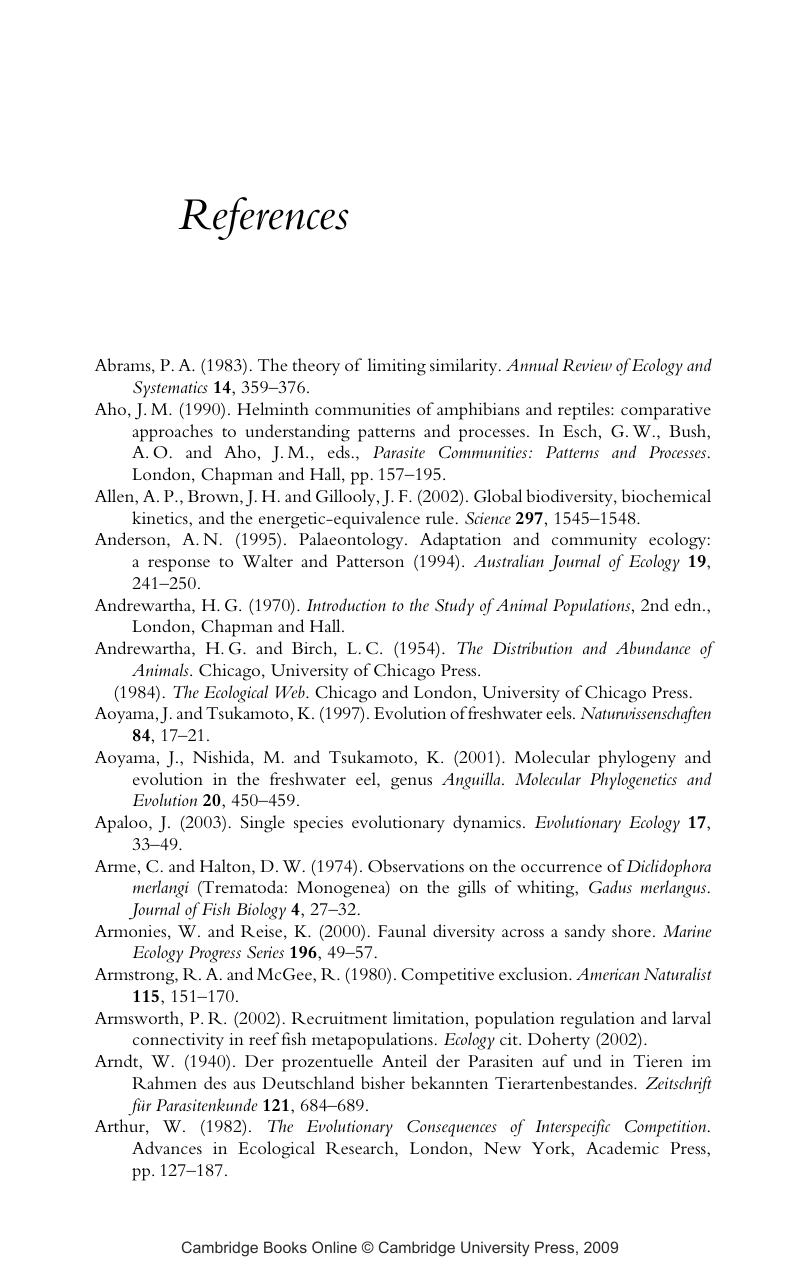Book contents
- Frontmatter
- Contents
- Acknowledgements
- Introduction
- 1 Concepts and problems
- 2 Nonequilibrium in communities
- 3 Interspecific competition: definition and effects on species
- 4 Interspecific competition: effects in communities and conclusion
- 5 Noncompetitive mechanisms responsible for niche restriction and segregation
- 6 Patterns over evolutionary time, present mass extinctions
- 7 Some detailed examples at the population/metapopulation level
- 8 Some detailed examples at the community level
- 9 Some detailed biogeographical/macroecological patterns
- 10 An autecological comparison: the ecology of some Aspidogastrea
- 11 What explains the differences found? A summary, and prospects for an ecology of the future
- References
- Taxonomic index
- Subject index
- References
References
Published online by Cambridge University Press: 11 September 2009
- Frontmatter
- Contents
- Acknowledgements
- Introduction
- 1 Concepts and problems
- 2 Nonequilibrium in communities
- 3 Interspecific competition: definition and effects on species
- 4 Interspecific competition: effects in communities and conclusion
- 5 Noncompetitive mechanisms responsible for niche restriction and segregation
- 6 Patterns over evolutionary time, present mass extinctions
- 7 Some detailed examples at the population/metapopulation level
- 8 Some detailed examples at the community level
- 9 Some detailed biogeographical/macroecological patterns
- 10 An autecological comparison: the ecology of some Aspidogastrea
- 11 What explains the differences found? A summary, and prospects for an ecology of the future
- References
- Taxonomic index
- Subject index
- References
Summary

- Type
- Chapter
- Information
- Nonequilibrium Ecology , pp. 189 - 215Publisher: Cambridge University PressPrint publication year: 2006



